Central Venous Access Devices (CVADs) Study Guide
1/23
Earn XP
Description and Tags
A set of flashcards based on key principles, types, and care of Central Venous Access Devices (CVADs) to assist in study and retention of critical information.
Name | Mastery | Learn | Test | Matching | Spaced |
|---|
No study sessions yet.
24 Terms
What are CVADs used for in IV therapy?
CVADs are used for long-term IV therapy, including parenteral nutrition, chemotherapy, blood products, antibiotics, central venous pressure monitoring, and hemodialysis.
What should the nurse do if an air embolism is suspected?
Clamp the catheter, administer oxygen, and place the client on the left side in the Trendelenburg position.
This position helps trap the air in the apex of the right atrium rather than entering the right ventricle and, from there, moving into the pulmonary arterial system.
Stay with the client while a colleague contacts the provider.
Central lines must be kept clamped at all times to prevent which of the following conditions:
Air embolisms
CVADs may require heparin flushing. What is the goal of heparin flushing in CVADs?
To maintain catheter patency rather than systemic anticoagulation.
Heparin flushing is intended to prevent clot formation within the catheter.
Flushing procedures for a PICC line or any CVAD include:
After catheter placement, before fluid infusion
Before and after blood sampling and medication, blood-product, and parenteral nutrition infusions.
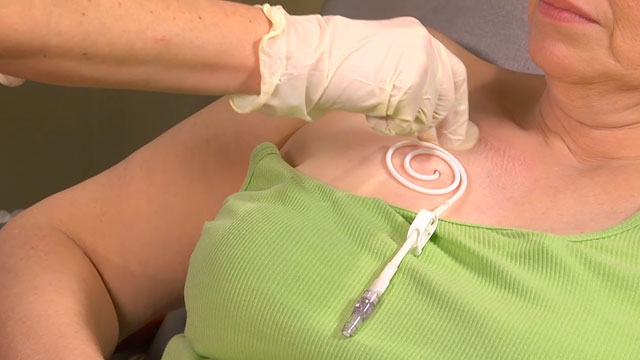
To perform a central line dressing change following aseptic technique:
1. Gather supplies: Sterile gloves, sterile drape, prep solution, new sterile dressing, tape, scissors.
2. Perform hand hygiene and don sterile gloves.
3. Remove old dressing carefully, avoiding disrupting catheter. Discard dressing.
4. Inspect insertion site for signs of infection.
5. Using sterile technique, clean insertion site with prep solution using circular motion from insertion site outward.
6. Allow area to completely dry.
7. Apply new sterile dressing, securing catheter without tension.
8. Date and initial new dressing.
9. Discard supplies properly and remove gloves.
10. Perform hand hygiene.
Document procedure, site assessment, and any complications per policy. Maintain sterile field and aseptic technique throughout.
What is the importance of confirming catheter tip location?
Catheter tip location must be confirmed with a chest x-ray (unless placed under fluoroscopy) to ensure proper placement.
What flushing technique is recommended for CVADs?
The push-pause method using sterile 0.9% sodium chloride.
Rationale: This technique helps to ensure that the catheter is clear and free of clots, preventing occlusions.
What should be used to flush to maintain patency in a CVAD?
Heparin flush should be used to maintain patency, according to facility policy.
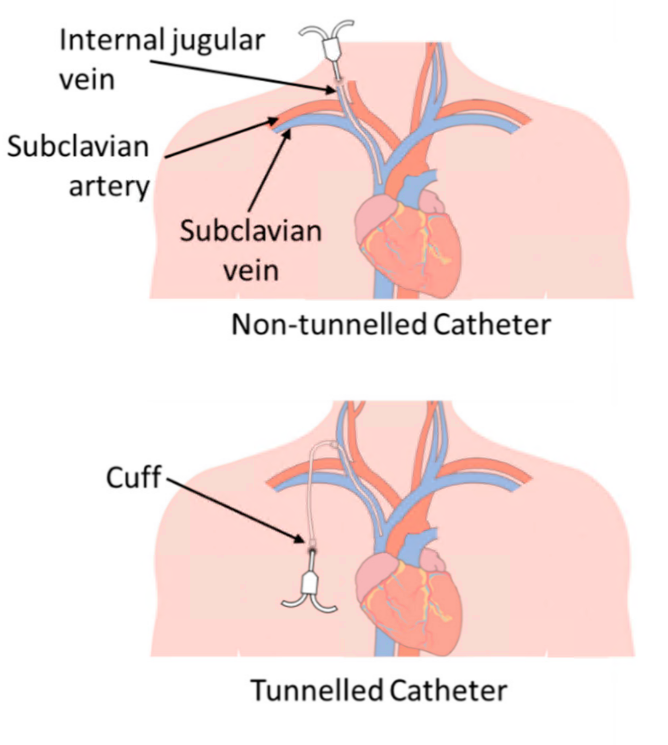
What is the difference between non-tunneled and tunneled CVADs?
Non-tunneled CVADs are inserted directly into a central vein for short-term use and have a high infection risk
Tunneled CVADs are inserted under the skin and have a Dacron cuff to prevent infection for long-term use.
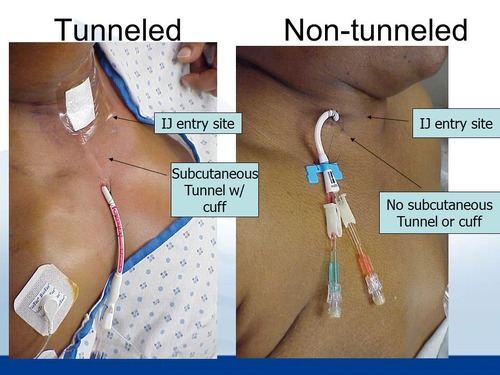
How often are transparent semipermeable dressing be changed in a CVAD?
A transparent semipermeable membrane dressing should be changed every 5 to 7 days.
CVAD dressings with gauze should be changed every 48 hours.
What are some major advantages of an implanted port?
Implanted port requires less frequent flushing, typically once a month when not in use.
Clients can swim w/ out any concerns about keeping the device dry.
Because it’s under the skin, there’s no need to cover the device while bathing or showering.
Main differences between a PICC line vs a typical peripheral IV line?
PICC line is much longer; requires X-ray for placement confirmation
Can stay in place for a year or more as long as there are no complications.
Peripheral IV sites need to be changed every 72 to 96 hours to prevent infections.

Where is a PICC line inserted and what is its purpose?
A PICC line is inserted into the basilic or cephalic vein, with the tip resting in the superior vena cava, for therapy lasting days to months.
What are the primary risks associated with non-tunneled CVADs?
Non-tunneled CVADs have a high infection risk and are used for short-term therapy.
What should you do if resistance is felt while flushing a CVAD?
Stop and assess patency before attempting to flush again.
What complication is indicated by fever and chills in a patient with a CVAD?
Fever and chills may indicate a CLABSI (Central Line-Associated Bloodstream Infection).
What is the recommended interval for changing a transparent dressing on a CVAD?
A transparent dressing should be changed every 5–7 days.
What is the appropriate action if catheter malposition is suspected?
If malposition is suspected, confirm external length and notify the provider.
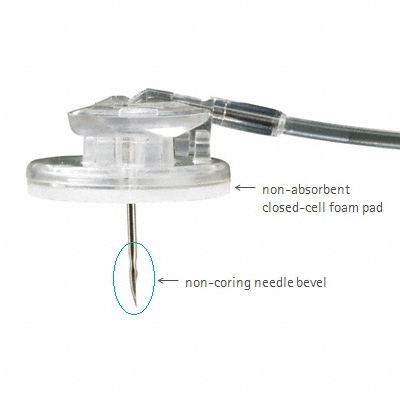
What type of needle is used to access an implanted port?
Noncoring (Huber) needle is used to access an implanted port.
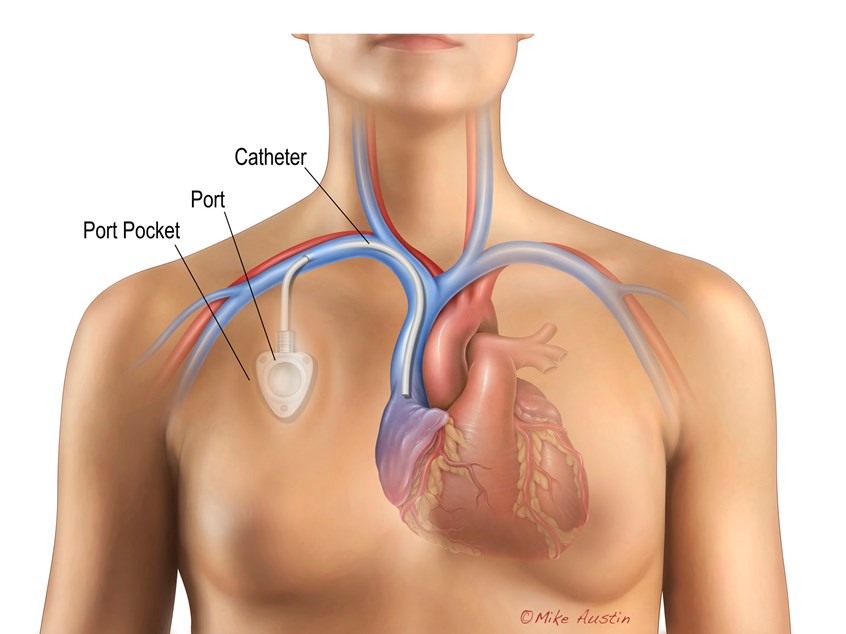
What is the consequence of using a syringe smaller than 10 mL with a CVAD?
Using a syringe smaller than 10 mL can lead to catheter rupture.
The smaller the syringe, the higher the pressure.
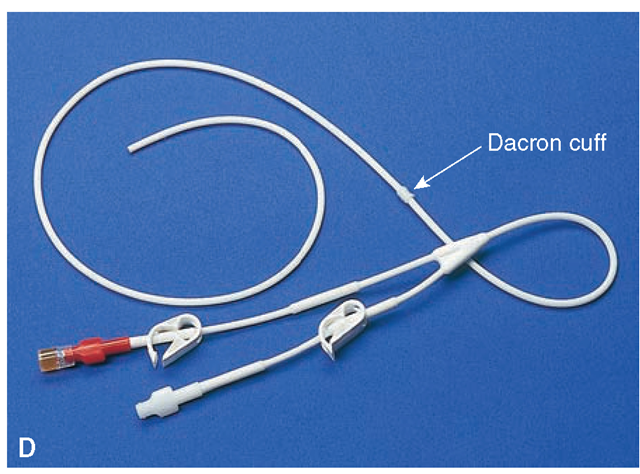
What is the main purpose of a Dacron cuff in a tunneled CVAD?
Dacron cuff in a tunneled CVAD helps prevent infection.
What is the flushing agent that is not recommended for CVADs?
Chlorhexidine is not a recommended flushing agent;
Only saline and heparin should be used.
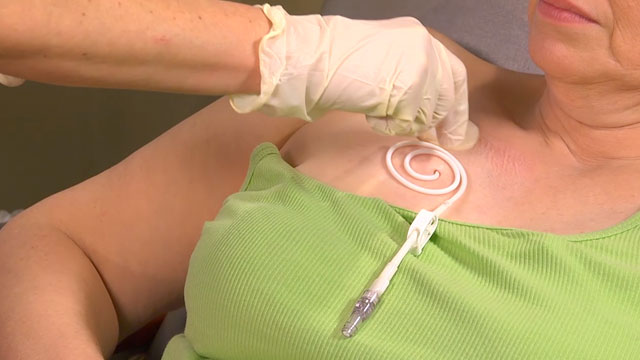
What is the proper site-cleaning method when using chlorhexidine?
The correct method is to apply in a circular motion for 15 seconds, then let air dry.